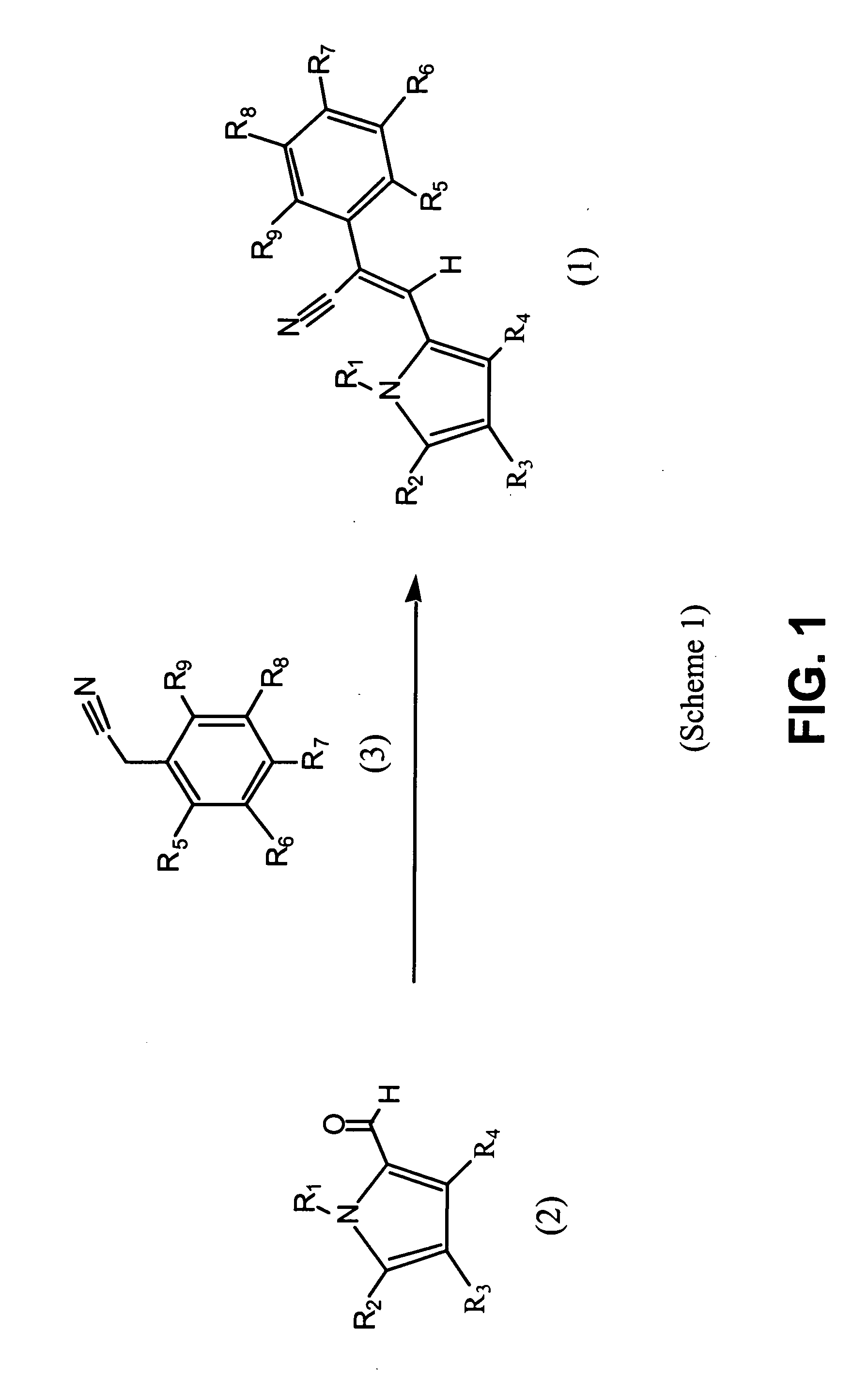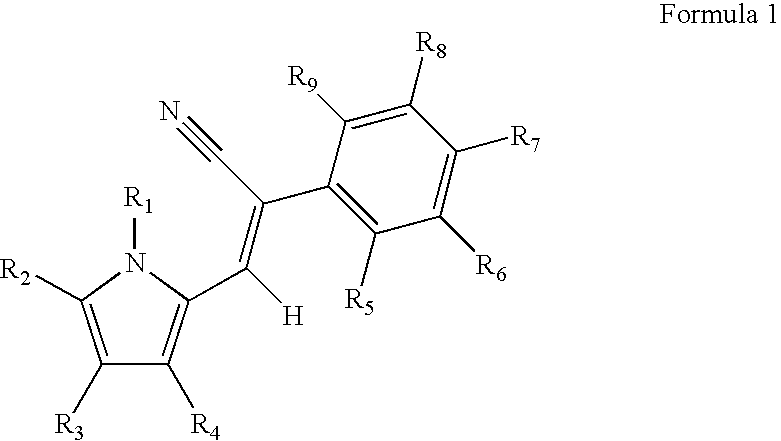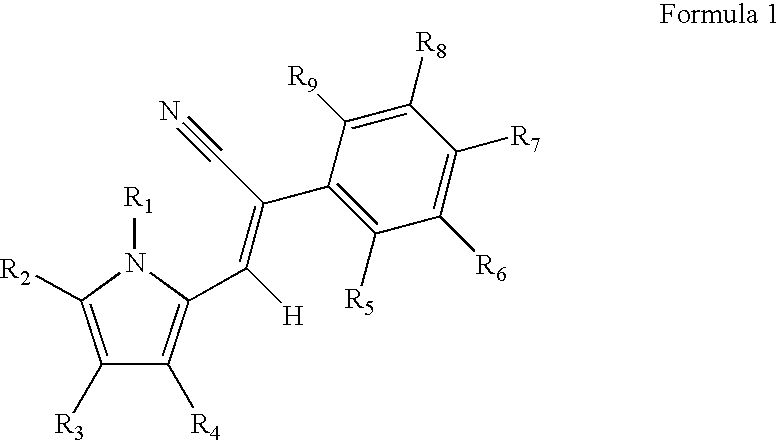Control of parasites in animals by the use of parasiticidal 2-phenyl-3-(1H-pyrrol-2-yl)acrylonitrile derivatives
a technology of acrylonitrile and phenyl-3-(1h-pyrrol-2-yl)acrylonitrile, which is applied in the direction of antiparasitic agents, biocides, drug compositions, etc., can solve the problems of compromising existing treatment methods and parasite control, and previously reported methods of using compounds of this type are limited to cough suppression and materials scien
- Summary
- Abstract
- Description
- Claims
- Application Information
AI Technical Summary
Benefits of technology
Problems solved by technology
Method used
Image
Examples
example 1
Preparation of Reagents
[0221] It should be noted that the compounds of Tables 1a and 1b, supra (also listed by Table 8, infra) where prepared using commercially available reagents, when available. Those substituted phenyl acetonitriles that were not available commercially were prepared from available benzoic acids, benzaldehydes, benzyl alcohols or benzyl halides by the well established procedures given in J. March, “ADVANCED ORGANIC CHEMISTRY”, Third Edition, John Wiley & Sons, New York, 1985, incorporated by reference herein in its entirety.
[0222] In addition, 4-bromo-1H-pyrrole-2-carbaldehyde was prepared according to C. Jaureguiberry, et al. Acad. Sc. Paris, 1971, 273, 276, incorporated by reference herein in its entirety, and used to prepare Compounds 11, 12, 23, and 29-31, and 34, as listed by Tables 1a and 8.
[0223] 4,5-dichloro-1H-pyrrole-2-carbaldehyde was prepared according to P. E. Sonnet, J. Org. Chem., 1972, 37, 925, incorporated by reference herein in its entirety, a...
example 2
Preparation of (Z)-2-(4-Chloro-phenyl)-3-(1H-pyrrol-2-yl)acrylonitrile
[0226] This compound was prepared using Triton B as phase transfer catalyst, as follows.
[0227] A suspension of 1H-pyrrole-2-carbaldehyde (3.3 g, 34.7 mmol) and 4-chlorophenylacetonitrile (5.5 g, 33.0 mmol, 0.95 equivalents) in water (50 ml) was heated to 50° C. When all the solid material had melted, the vigorously stirred mixture was treated with 40% aqueous Triton B (14 ml, 5.6 mmol). Precipitation began almost immediately. Stirring was continued for 5 h at 50° C., breaking up lumps when necessary. The still warm suspension was filtered through a sintered glass funnel and washed with warm water. The yellow precipitate was dried at the pump (6.63 g). This is Compound 2 in TABLE 8.
example 3
Preparation of (Z)-2-(4-Chloro-phenyl)-3-(1-methyl-1H-pyrrol-2-yl)acrylonitrile
[0228] A suspension of 4-chlorophenylacetonitrile (500 mg, 3.30 mmol) and 1-methyl-1H-pyrrole-2-carbaldehyde (370 mg, 3.39 mmol, 1.03 equiv.) in water (5 ml) was treated with 40% aqueous Triton B (1.4 ml, 3.3 mmol). Precipitate began forming almost immediately. After stirring for 2 h, the precipitate was filtered off, washed with water, and dried to afford a yellow solid (682 mg). This is Compound 6 in Table 8.
PUM
| Property | Measurement | Unit |
|---|---|---|
| concentration | aaaaa | aaaaa |
| concentration | aaaaa | aaaaa |
| concentration | aaaaa | aaaaa |
Abstract
Description
Claims
Application Information
 Login to View More
Login to View More - R&D
- Intellectual Property
- Life Sciences
- Materials
- Tech Scout
- Unparalleled Data Quality
- Higher Quality Content
- 60% Fewer Hallucinations
Browse by: Latest US Patents, China's latest patents, Technical Efficacy Thesaurus, Application Domain, Technology Topic, Popular Technical Reports.
© 2025 PatSnap. All rights reserved.Legal|Privacy policy|Modern Slavery Act Transparency Statement|Sitemap|About US| Contact US: help@patsnap.com



